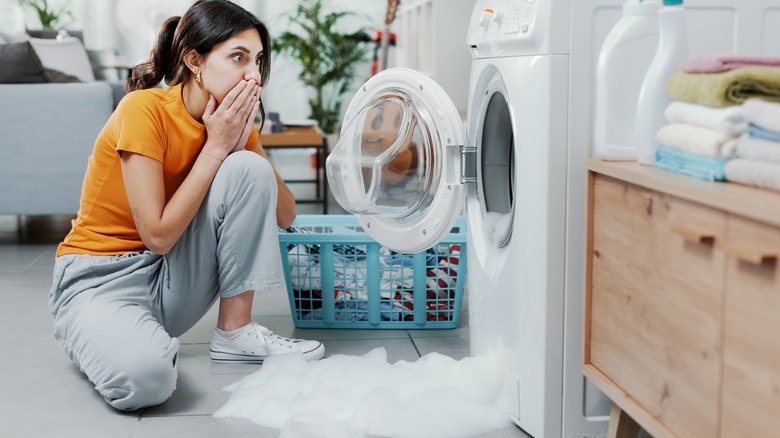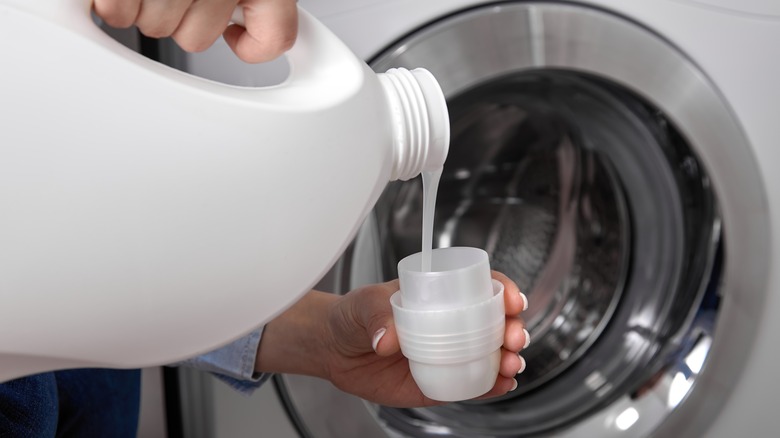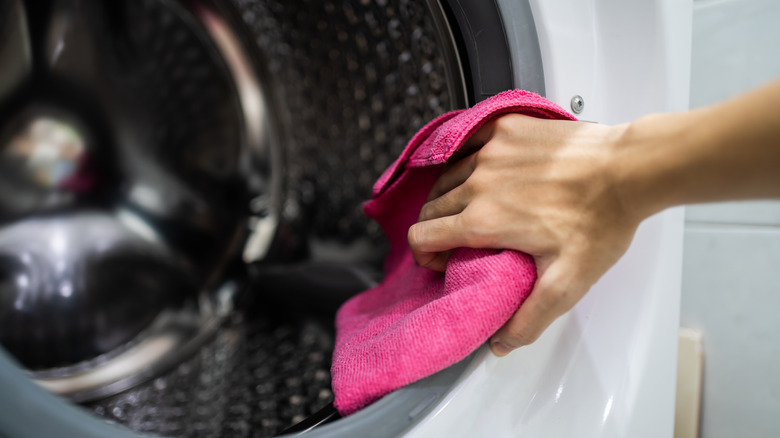What It Means When Your Washing Machine Has Too Many Suds
Washing machines are undeniably more convenient than handwashing clothes, assuming they work correctly. There is any number of issues washing machines can experience, from leaks and plumbing problems, drums malfunctioning, heating elements failing, and more.
One issue you may encounter with your washing machine is that it produces excess suds. Suds are a byproduct of mixing soap and water, and while not necessary to get your clothing clean, they're a good sign that the agitator is working. The issue arises when there are too many suds bubbles, so much so that they don't wash away during the rinse and spin cycles. This may be a one-time situation, in which case you'll just have to rerun your clothes in a quick setting. If it's an ongoing issue, though, it may speak to an issue in how you're loading the washer or with the device itself. Let's help you to resolve the problem with excess suds to avoid wasting time and money.
Detergent issues
Suds are created by soap, so detergent usage is the first culprit to investigate if you have an abundance in your washing machine. Most detergent brands have instructions and built-in measurements in the cap; some washing machines even have directions in the lid, so ensure to look out for it before washing your clothes. For general reference, you should only use one pod, 2 tablespoons of liquid detergent, or ¼ a cup of powder detergent per full load. If you're using more than that, you'll likely get an overflow of suds.
Another detergent-related issue that could be causing too many bubbles is detergent build-up. If you aren't regularly cleaning your washing machine, the detergent can stick to the walls of the appliance over time, especially if you're using too much detergent. If you're getting a sud overflow and not cleaning your machine after, it will dry down, and the cycle will repeat itself.
Fixing the issue
The simplest solution to too many suds in your washing machine is to cut back on your laundry detergent. If you don't think you're using too much, check out the model of your appliance — high-efficiency washing machines don't use nearly as much water as other models, so you'll want to cut back on your detergent use by a significant amount. Keep in mind that most front-loading machines use less water than top-loading models.
You should also try to regularly clean the inside of your washing machine to eliminate any detergent buildup. Ideally, you should clean your washing machine once a month. If you have a self-clean setting, then you're all set. If not, you can run it on a hot rinse cycle alone or add commercial cleaners or more natural methods, like vinegar, hydrogen peroxide, or baking soda. If neither of these methods gets rid of the suds, then there may be something wrong with the drain, so you should call in a plumber.


